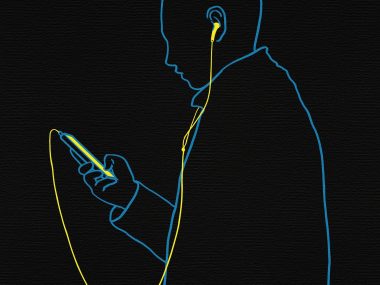Ask anyone in the industry what keeps them up at night, and you’ll hear the same answer: AI-generated music. Executives and artists alike worry that artificial intelligence will replace human artists and songwriters, while flooding streaming platforms with soulless tracks.
The truth is that the real threat to the music industry right now isn’t AI. It’s artificial streaming.
Artificial streaming has already cost real musicians millions in royalties. In some cases, even erased their music from the very platforms designed to promote them.
What Is Artificial Streaming?
Artificial streaming is the manipulation of plays using bots, click farms, and fake playlists to inflate a track’s popularity. On paper, it looks like success: more streams, higher chart positions, better visibility. In reality, it’s fraud.
According to estimates, anywhere from 5–10% of streams worldwide are fake. That translates to billions of listens siphoned away from legitimate artists. And with royalties tied directly to streaming numbers, that money doesn’t just vanish, it gets rerouted to the fraudsters.
Take the case of Vancouver musician Paula Toledo. Her original song How Long was duplicated and uploaded as a fake version. Listeners searching for her track instead found the copy, leaving her work buried while royalties went elsewhere.
In another instance, altered versions of Halsey’s “Without Me” and Coldplay & The Chainsmokers’ “Something Just Like This” racked up millions of streams that should have gone to the originals.
Why Nobody Talks About It
If artificial streaming is so destructive, why doesn’t it get the same attention as AI-generated music? Why are we so distracted by the hypothetical threat of AI when the very foundation of streaming is being hollowed out by fraud?
Because AI feels new. It’s disruptive and it sparks debates about authorship, creativity. For many, it feels like the future of artistry is at stake. It’s a flashy, headline-grabbing story.
By contrast, artificial streaming, by contrast, is treated like an accounting problem. To some, it’s just fraud, piracy, another messy corner of the internet that platforms quietly try to manage behind the scenes.
The irony is that AI-generated music only becomes a true threat when paired with artificial streaming. Anyone can upload AI tracks, but without inflated streams, those songs fade into obscurity.
The Industry’s Counterattack
To their credit, parts of the industry are fighting back. Streaming services are investing in detection tools. The Music Fights Fraud Alliance, a coalition of labels, platforms, and rights groups, is pushing for collective action. Platforms are imposing penalties and removing tracks linked to suspicious activity.
The problem is massive, and enforcement often lags behind. For every fake track pulled down, another pops up. It’s a digital game of whack-a-mole where the stakes aren’t just money. It’s visibility, opportunity, and credibility for real artists.
The Hidden Crisis Affecting The Industry
Artificial streaming isn’t a future threat. It’s happening now. It’s stealing money from artists. It’s getting real songs made by real artists removed from streaming platforms.
If the industry truly cares about protecting artists, it can’t just panic over AI’s creativity problem. It has to ensure that every stream represents a real listener. It’s the only way to preserve the integrity of the system.
AI may reshape the creative process, but artificial streaming is already reshaping the economy of music.






